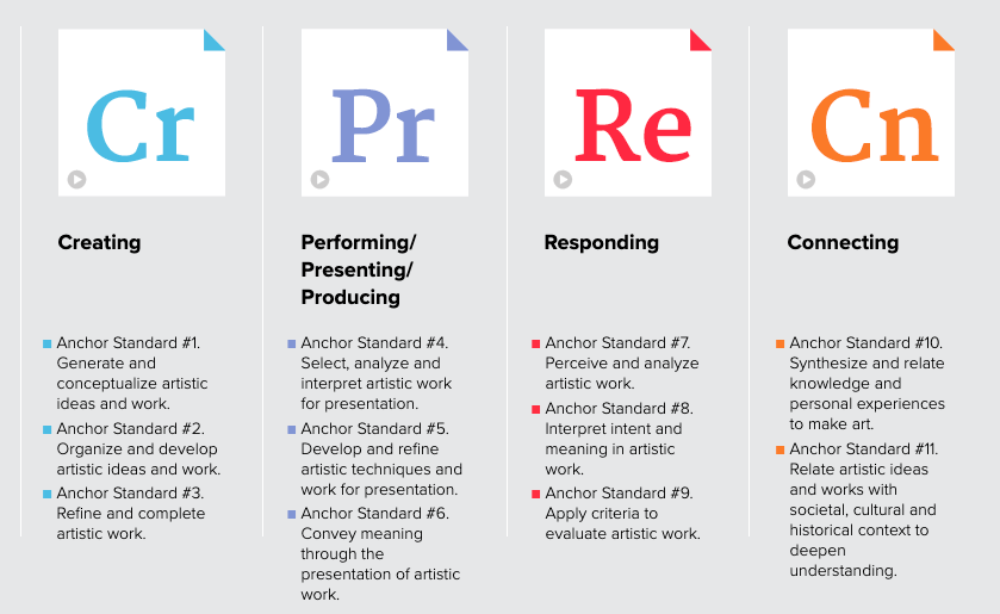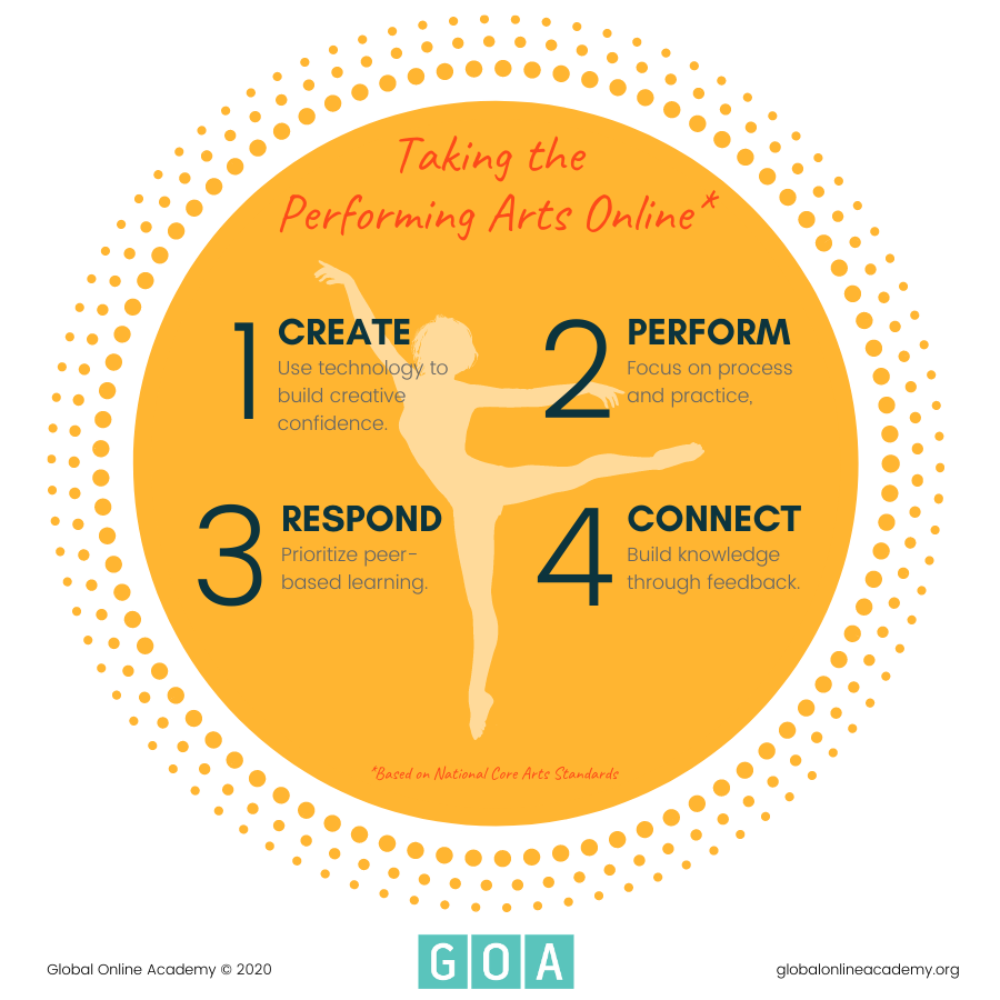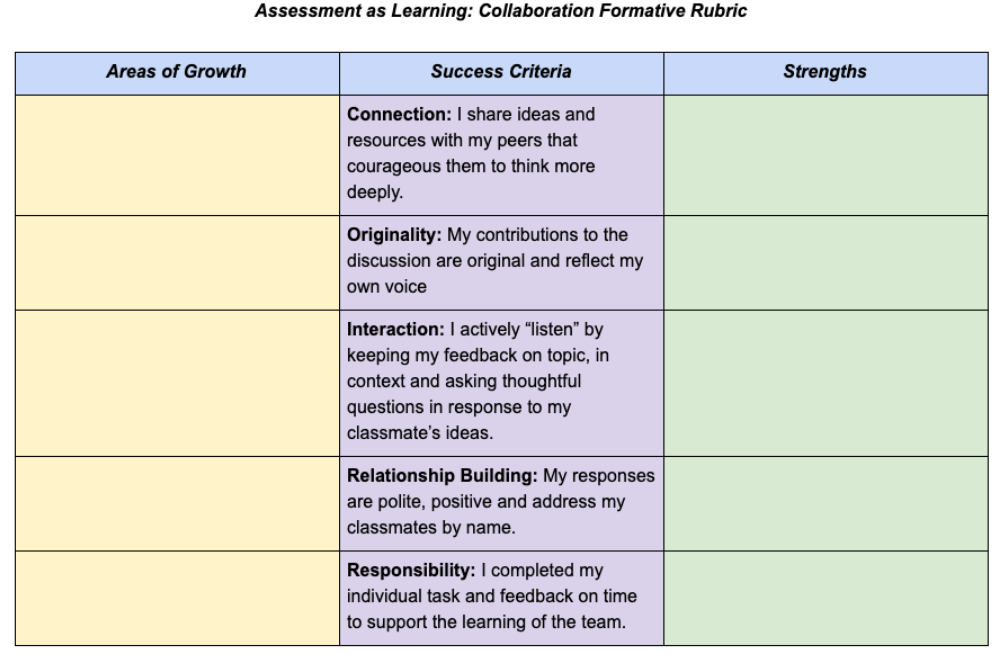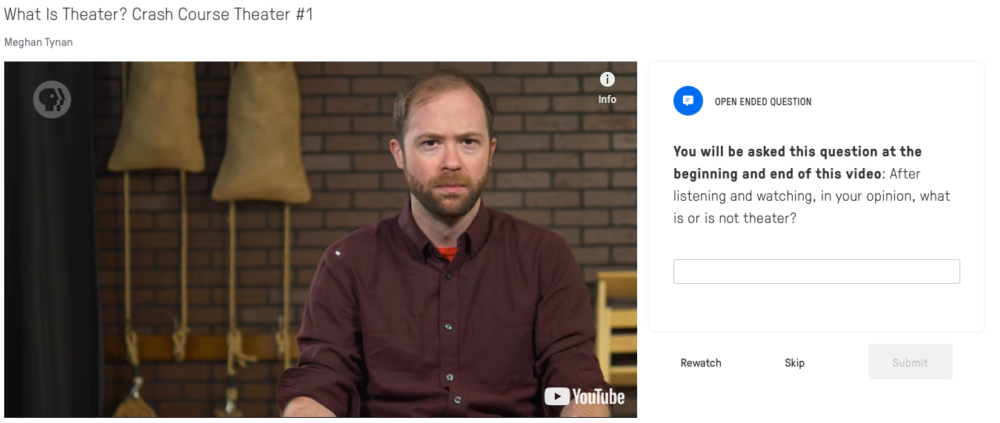Four Strategies for Taking the Performing Arts Online
Cara Lavallee is Dance Director at GOA member school The Episcopal Academy. She was also a GOA Learning Design Coach during summer 2020.
When teachers from music, theatre and dance disciplines were thrust into online learning several months ago, our first surge of mental energy was devoted to figuring out how to take large ensembles such as bands, choirs, dance troupes, and entire casts of musicals and bring everyone together online. Performing arts teachers are seasoned in producing large-scale performances with rosters that can reach 30, 40, or 50+ students. This is what excites us about our work, and what we excel at.
For many of us, though, traditional, large-scale performances are not an option at this time. With a literal show-stopping pandemic, performing arts teachers have been forced to re-think their courses, rehearsals, concerts, and shows. How do we keep our students driven and inspired with no final curtain call to motivate them?
This is where “The Big Four” come in, the National Core Arts Standards: Creating, Performing, Responding, and Connecting.

The National Core Arts Standards define high-quality arts education.
Many performing arts programs, pre-pandemic, were heavy in the “Perform” category, and rightfully so: how can you study singing, instrumental music, dance, and theatre and not perform? Culturally, we are used to consuming performing arts as a final product, polished after months of rehearsal and repetition.
To take the performing arts online, we have to think intentionally about all four of these areas. Here are some examples of ways to approach The Big Four when it comes to online teaching, tilting away from the Performing expectation and seizing the opportunity to lean into the Creating, Responding and Connecting categories.
Create: Use Technology to Build Creative Confidence
Creativity requires some level of risk-taking and vulnerability, and even online, performing arts teachers need to establish norms and expectations for students sharing their work.
This category is broken down into three anchor standards:
- Generate and conceptualize artistic ideas and work.
- Organize and develop artistic ideas and work.
- Refine and complete artistic work.
For example, before asking my students to create artistic work, I ask them to reflect on when in their lives they have been asked to ‘be creative’. One prompt might be, “What is the most creative thing you have done?” (For further reading on creativity, I love Twyla Tharp’s book The Creative Habit.) Here is an example of a videomaking activity I created for high school students that can be revisited multiple times over a semester or full-year course. I wanted to get my students comfortable with being creative. I gave them multiple, low-stakes opportunities to flex their creative muscles using relatively simple and accessible technology, so when it came time for more long-form creative projects, they had experience creating choreography and, more importantly, a record of them to look back on.

Perform: Focus on Process and Practice
In this category, performing arts teachers are looking to generate the following experiences for their students, steeped in presentation:
- Select, analyze, & interpret artistic work for presentation.
- Develop and refine artistic techniques and work for presentation.
- Convey meaning through the presentation of artistic work.
Many music, theater, and dance classes focus only on these standards. Class time is used to prepare for the concert, recital, or opening night. In the online realm, this approach needs reframing.
Here is an example of how music teacher Anne Hess (Germantown Friends School) teaches her 7th grade students ukulele technique. In this lesson, students have practiced their technique and recorded their rehearsal three times already in Flipgrid. Anne asks students to look back at their videos and diagnose what they need to work on.
Anne developed this project as part of GOA’s Design Bootcamp. In her reflection on the project, she wrote, “A process portfolio is an assignment I use to help students self-assess, with an eye toward having them acknowledge their own growth as ukulele players. It comes after we have been working on a piece long enough to have made three practice videos. It also has the effect of letting the students know that Flipgrid practice check-ins are not just one-off homework assignments, but an important record of their process that can serve them later."
Respond: Prioritize Peer-Based Learning
This category is where performing arts teachers can amplify their students’ voices while simultaneously gathering insight into who their students are as individuals. The anchor standards for this category are:
- Perceive and analyze artistic work.
- Interpret intent and meaning in artistic work.
- Apply criteria to evaluate artistic work.
Sarah Schryburt, Performing Arts Department Head at The Bishop Strachan School, embraces the structure of online learning in her asynchronous discussion. Additionally, she uses a single point rubric to provide clear guidelines for engaging in and growing the discussion space.

In her Design Bootcamp project reflection, Sarah wrote, “I wanted to build in choice and voice by having students select their own dances to write about. This also provided me with an opportunity to see their favorite dance styles, which allowed me to make strategic decisions for the direction for the course. By giving students the opportunity to watch, read, and respond to their peers' work, my goal was to start to build community and bridge the collaboration between face to face teaching and our online world."
Connect: Build Knowledge Through Feedback
When we ask our students to reflect on their performing arts experience, we are asking them to make connections between the work we do in class and how it affects them as artists and individuals. We also want to provide them with a global perspective on the art form so they can see not only where their lives intersect with the performing arts, but also where topics of diversity, equity, and inclusion in the performing arts come into question.
The two anchor standards associated with this category are:
- Synthesize and relate knowledge and personal experiences to make art.
- Relate artistic ideas and works with societal, cultural and historical context to deepen understanding.
Jeremy Sweetlamb, the Director of Middle School Theatre at St. Stephen's Episcopal School builds classroom community between his students through peer feedback. He breaks down the ins and outs of giving/receiving feedback for his students as well as lets them practice on a YouTube video before commenting on one another's work.
In his reflection on his Design Bootcamp project, Jeremy wrote, “I want [my students] to be good at talking to each other about their art—they understand each other better than I ever could. I also like that these lessons can be applied to many other aspects of their lives, not to mention so-called ‘core’ areas of academia.”
Lessons such as this one center around a technical skill that requires practice, rehearsal and repetition. Grounding these lessons in the 4W's and 1H helps keeps students and teachers on track:
- What is the work?
- Which skill(s) will students receive feedback on?
- Who should give feedback?
- Where should the feedback happen?
- How should students apply the feedback?
Meghan Tynan, Theater Director at Doane Academy, explores the history of theater with her students. For her Design Bootcamp project, Meghan used EdPuzzle for content delivery and formative assessment with this topic – two birds, one stone! The EdPuzzle she created here has Meghan’s own questions peppered in a video she curated from PBS, prompting the students to stop, think and respond to the information in the video before moving ahead.

EdPuzzle allows you to add questions and other interactive elements to videos you create or curate.
In her project reflection, Meghan wrote, "I felt so overwhelmed at how to navigate the mass amount of theater history content, that I forgot other people have done it already and done it better. I forgot that technology is a tool to deliver content as well as assess—everything doesn't have to come from me all the time!"
Performing arts teachers working online have to shift our thinking to certain things we can do well online: timely feedback, relationship-building, amplifying student voices, and more. Just like we ask our students to practice their scales and do their pliés, we need to build up our skills with online teaching before we can reach mastery. Be kind to yourself, try something new, and share out with colleagues when you discover something that works well.
Want to develop your online and hybrid learning design skills? Join a GOA educator course or sign your team up for one of our facilitated workshops. For more free resources on high-quality online learning during COVID-19, visit this landing page.
